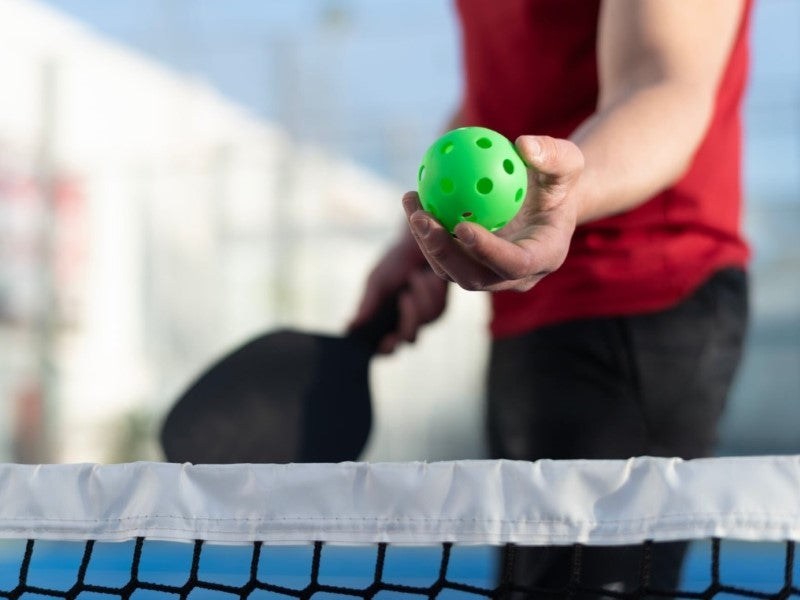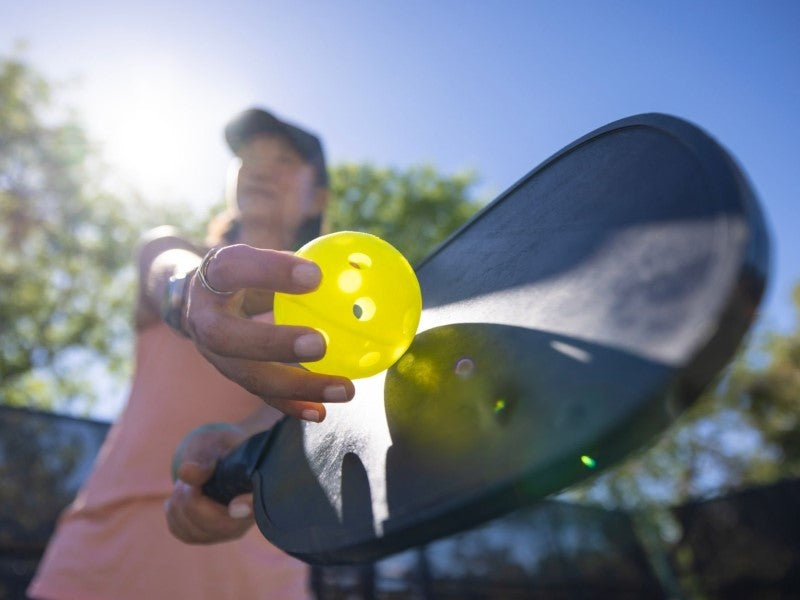Pickleball is a distinctive game that merges aspects of tennis, badminton, and ping pong into one fast-paced sport. It has become one of the fastest-growing games in the world due to its accessibility, quick learning curve, and competitive nature. As more players pick up a paddle and step onto the court, one of the most frequent questions asked—especially by those with a background in other racket sports—is: “Can you serve overhand in pickleball?”
What Do the Official Rules Say?
The official guidelines for playing pickleball are created and regulated by USA Pickleball, the organization responsible for overseeing the sport across the country.According to the current official rulebook, overhand serves are not allowed. In fact, there are specific mechanics a legal serve must follow:
-
Underhand Motion Only
In pickleball, the serve must be executed using an underhand motion, with the paddle moving in an upward arc as it makes contact with the ball. This means the arm must move upward, and not in a sidearm or overhand swing. -
Paddle Position
When the ball is struck, the paddle head must be below the wrist. This is key—if your paddle is above your wrist during contact, it becomes an illegal serve. -
Contact Below the Waist
In pickleball, players must strike the ball below the waist—specifically, at or beneath the level of the navel. -
One Foot Behind the Line
When serving, the player must keep at least one foot entirely behind the baseline and may not touch or cross the line until the ball has been struck.
These rules are non-negotiable in both recreational and competitive play. If any one of them is violated, it results in a fault—your serve does not count, and you may lose your service opportunity.

Why Are Overhand Serves Banned?
Pickleball rules are designed to promote fairness and equal opportunity for every player on the court.Overhand serves, while common in tennis, are too aggressive for the small court and lighter ball used in pickleball.
Here’s why overhand serves are not allowed:
-
To Reduce Injury Risk
Using an overhand motion to serve can place excessive pressure on the shoulder and elbow, increasing the risk of injury.By requiring underhand serves, pickleball becomes more inclusive, allowing older players and those with joint issues to play comfortably and safely. -
To Extend Rallies
The underhand serve is intentionally designed to start the rally, not dominate it. Pickleball emphasizes control, placement, and reflexes rather than power. An overhand serve would shorten rallies and remove one of the game’s most enjoyable aspects—fast-paced exchanges at the net. -
To Maintain Game Balance
Overhand serves would give an unfair advantage to taller, stronger players. The current serving rule promotes fairness and strategy over brute force.
Common Misconceptions About Serving
1. “If I hit it fast, it counts as overhand, right?”
No. Speed has nothing to do with legality. It’s all about how you strike the ball—your arm motion, paddle position, and contact point.
2. “Can I swing from the side as long as it’s low?”
Not necessarily. Sidearm serves often violate the upward arc requirement or paddle height rule. Unless you're swinging upward with the paddle below your wrist and making contact below the waist, it's probably a fault.
3. “I’ve seen pro players hit hard serves. How do they do that?”
Pro pickleball players use legal underhand serves with spin, depth, and precision. They do not serve overhand. Instead, they master the angle and timing of their motion to generate power within the rules.
Drop Serve: A Legal and Strategic Option
Starting in 2021, the drop serve was officially included in the rules as a valid serving option.This gives players another serving method, especially helpful for beginners or those with mobility issues.
Here’s how it works:
- You drop the ball from any height (you can’t toss or throw it).
- Let the ball bounce once on the court.
- Then strike it using a legal underhand motion.
The drop serve allows for more flexibility in timing and motion. Some players find it easier to add spin and pace to the ball this way. During the serve, the paddle must remain below the wrist, and the ball must be hit below the waist—even if the player chooses to use a drop or bounce serve.

What Happens If You Serve Overhand?
If a referee or opponent notices that your serve is overhand—meaning your paddle was above your wrist or you made contact above the waist—it’s an automatic fault.
Here’s what that means:
- In singles play, losing a rally results in the server forfeiting their turn to serve.
- If it’s doubles, and you're the first server on your team, your partner gets the next serve.
- In tournament play, multiple illegal serves may result in warnings or penalties.
Don’t risk it. Even if no one calls it out right away, building bad habits can cost you later when rules are enforced more strictly.
How to Hit a Powerful Legal Serve
Many new players want to add power or spin to their serve—but think they can only do that with an overhand swing. The truth is, you can create strong, strategic serves while following all legal guidelines.
Here’s how:
-
Focus on contact point
Hit the ball at the lowest legal height with a firm, smooth motion. Avoid jerky or incomplete swings. -
Use your wrist for control
Snapping your wrist upward at the moment of contact adds power and accuracy without violating the wrist rule. -
Add spin
Brush up on the ball to create topspin. This helps keep the ball low and forces your opponent to return from a tough angle. -
Vary your placement
Vary your serves by aiming deep towards the baseline or wide to the corners. Keep your opponent guessing. -
Practice drop serves for flexibility
Drop serves allow more freedom in swing angle and can help build confidence.
Drills for Improving Legal Serves
1. Target Serving
Place cones in different corners of the service box and aim for them consistently using legal form.
2. Mirror Technique Practice
Practice your serve by standing in front of a mirror or recording yourself. Check your paddle height and wrist position.
3. Partner Fault Drills
Practice with a partner who calls out faults if your paddle or ball contact is too high. This builds muscle memory.
4. Drop and Drive
Work on drop serves by dropping from shoulder height and striking upward with controlled spin.
5. Spin Control
Try different grips (Eastern or Continental) to see how they affect your spin and power.
Is the Rule Likely to Change?
It’s unlikely. While pickleball rules have evolved—such as introducing rally scoring in some formats and allowing drop serves—the underhand serve rule remains foundational.
The integrity of the game relies on this rule. If overhand serves were allowed, the sport would tilt toward aggressive serving and away from balanced, strategic rallies.
Some experimental leagues may test alternative formats, but for USA Pickleball-sanctioned events and most official play, overhand serves remain illegal and likely will for the foreseeable future
To sum it up:
You cannot serve overhand in pickleball. The rules require an underhand, upward motion with the paddle below the wrist and the ball struck below the waist.
Rather than trying to force an illegal serve, embrace the strategies available within the rules. Mastering spin, placement, and timing will give you a powerful edge while keeping your game clean and competition-ready.
Whether you’re a recreational player or aiming for tournament play, serving within the rules shows your respect for the game—and gives you a solid foundation for long-term success.








Leave a comment
This site is protected by hCaptcha and the hCaptcha Privacy Policy and Terms of Service apply.